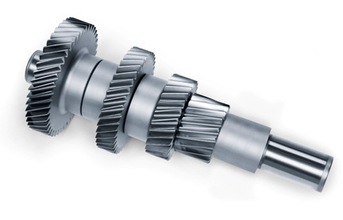
After that, the warmed up workpiece is joined with the shaft without any application of force. As the workpiece cools, it clamps down firmly on the shaft. A combination of robots, NC axes and gripper technology guarantees a process with a joining clearance of less than 15 micron. For instance, the whole process for camshafts - from pick-up of the relevant components to completion of the force fit action - takes just about seven seconds. A complete camshaft for a 4-cyinder engine is thus assembled in approximately 40 seconds. The processing speed is further increased by the fact that while one component is heat-shrunk, the next one is already being preheated - all inside the Emag system.
It is not only the short cycle times from which the user benefits. The process also provides a large degree of freedom in the construction of the machine. For instance, the technology allows for a multitude of materials to be heat-shrunk, such as forged or sintered cams that don't have to be ground anymore after having been shrunk onto the shaft. Ancillary components, such as bungs or end pieces, can be made from more cost-effective materials, giving access to a substantial savings potential. This approach also has a positive effect on development and functionality, as every component can be made to suit individual demands, whilst its functional density is increased. Where required, gears can, for instance, be fitted snugly against shoulders, thus ensuring that many new design variants can be implemented on the smallest possible space.
| "A complete camshaft for a 4-cyinder engine is thus assembled in approximately 40 seconds. The processing speed is further increased by the fact that while one component is heat-shrunk, the next one is already being preheated." |



































